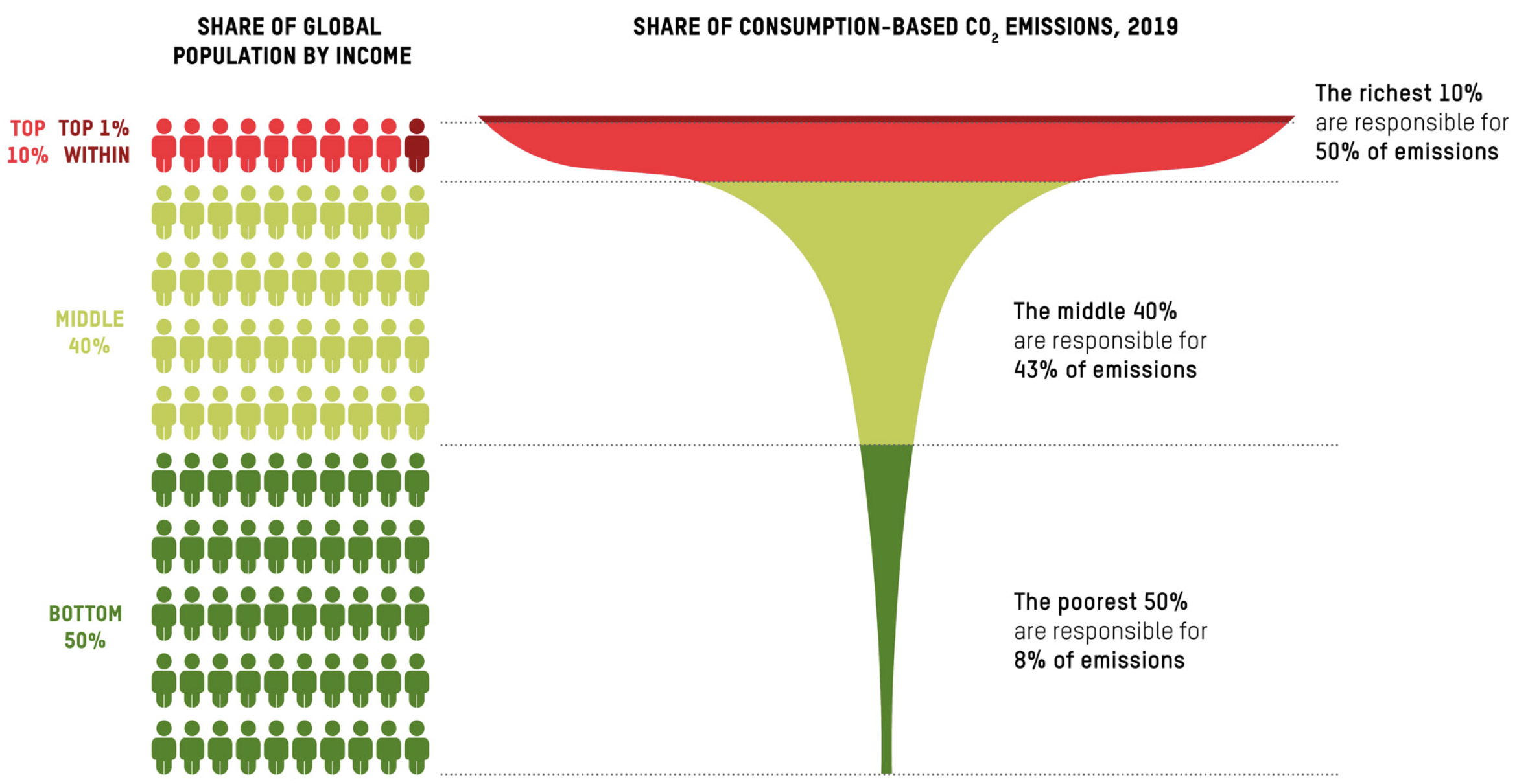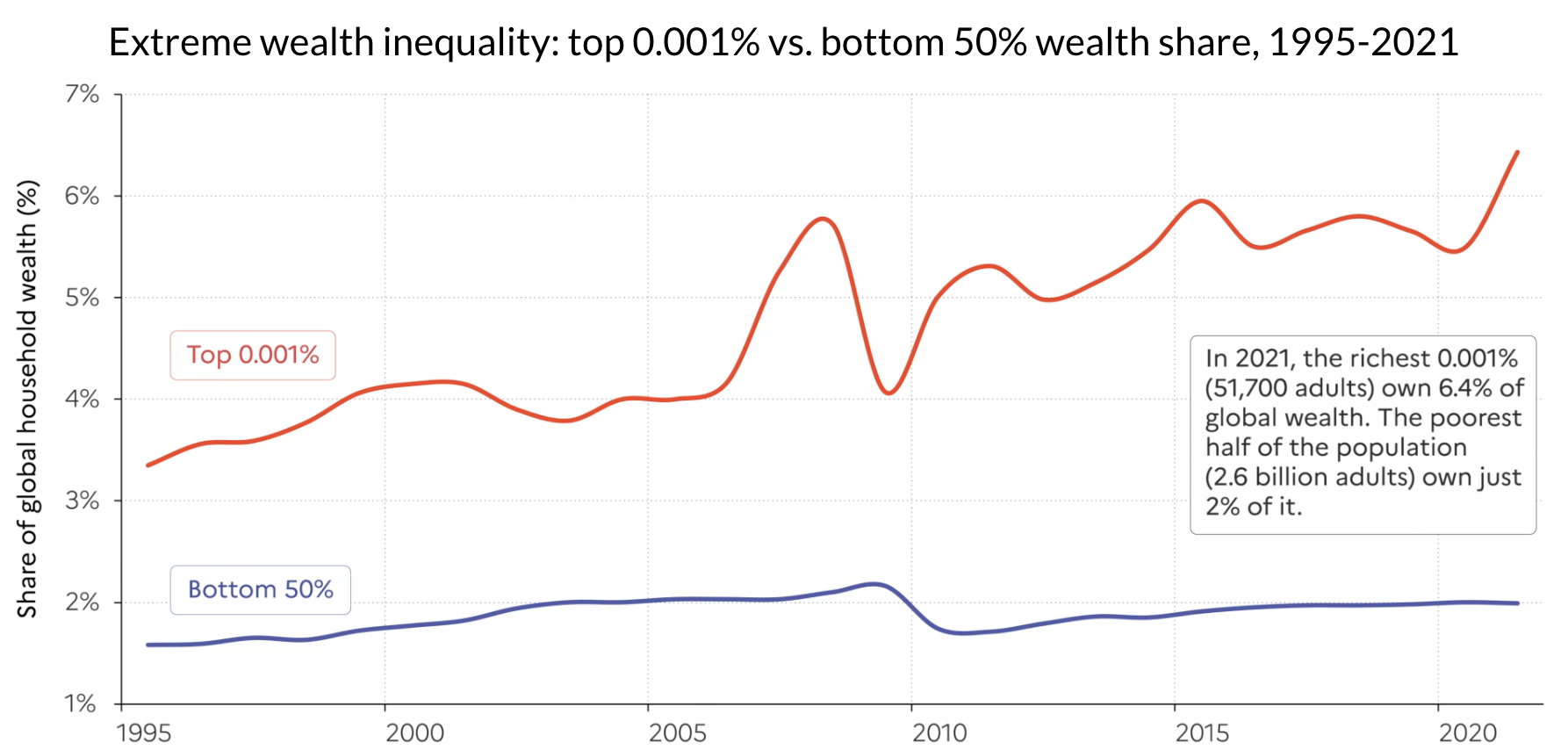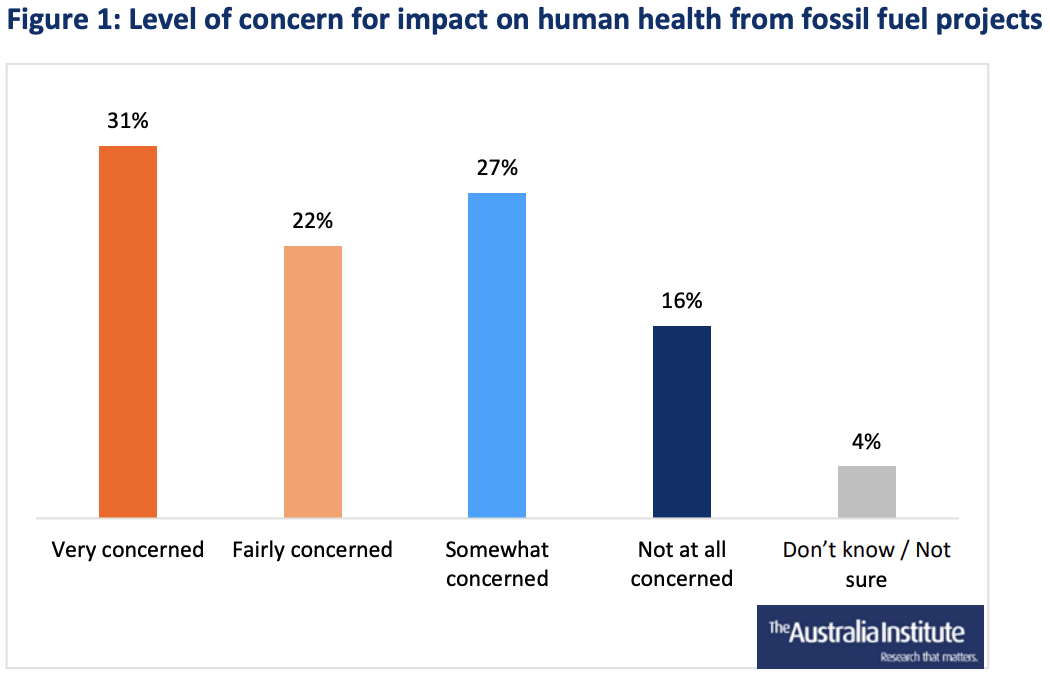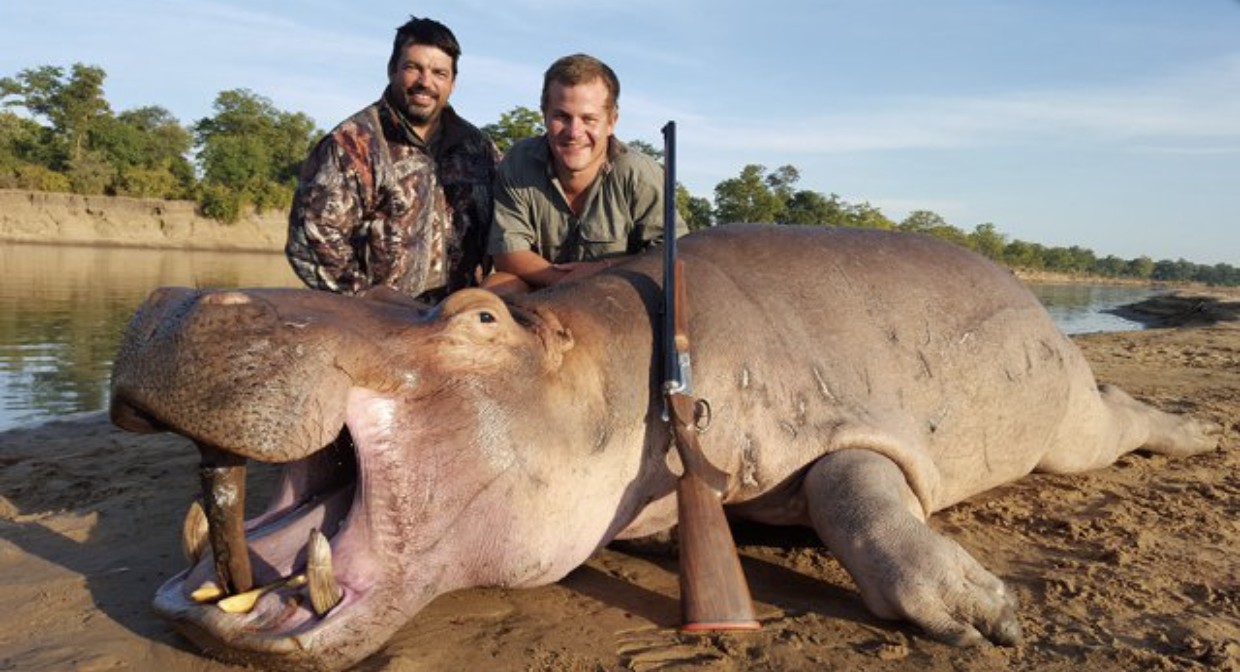Environment: The wealthy cause climate change; the poor suffer its consequences
February 24, 2024
Richest 1% produce as many greenhouse gases as the poorest 66%. Climate denialists have a new lyric: sure, its happening - so what? but Australians are concerned about climate change and want action. No, its not OK to shoot a hippo.
Climate Equality: A planet for the 99%
is the title of a report from Oxfam that examines the twin crises of climate breakdown and runaway inequality.
In 2019, the richest 10% of people were responsible for 50% of CO2 emissions five times their fair share, so to speak. The poorest 50% were responsible for 8% of emissions a sixth of their fair share (although its clearly ludicrous to talk about a fair share of something that needs to be eliminated).

The super-super-rich (the 7.7 million people who constitute the wealthiest 0.1% globally) were responsible for 4% of emissions (40 times their fair share), each of them producing on average 214 tons of CO2 per year. This is almost three hundred times the per capita emissions of the poorest 50%.
The tiny but incredibly privileged 0.1% really are a breed apart, even from their not-quite-so-rich neighbours. Each of them produces almost four times as many emissions as the next 0.9%, and twelve times as many as the next 9%. Were comparing subgroups of the worlds richest 10% here, a group that, lets face it, includes me and, I suspect, many of you.
The singular-super-rich 1% produce 16% of total emissions - staggeringly in my view, the same as the 5 billion poorest two-thirds of people in the world. However, in addition to the enormous emissions produced by their lavish lifestyles, the wealthiest 1% are important (read disastrous) for the climate in at least two other ways:
- Their massive financial investments in heavily polluting industries help to maintain the energy status quo, and
- Their incredible influence over the media, the economy, politicians and policy making helps to maintain the economic and political status quo.
And on top of that, they are best able, at least in the short term, to insulate themselves from the effects of climate change.
Oxfam proposes three big steps for a transition to a fair and sustainable world:
- A radical increase in equality, including a legislated living wage for all, partly funded by a 60% income tax on the richest 1% and 50-90% windfall taxes on 700 megacorporations.
- A rapid transition away from fossil fuels.
- An over-riding social purpose of wellbeing for all and planetary flourishing.
The report includes much more data and many case studies but if you have just five minutes I strongly recommend reading the two short forewords by Greta Thunberg and Njoki Njehu, Pan-African Regional Coordinator for Fight Inequality Alliance. Two extracts:
Climate breakdown and inequality are linked together and fuel each other. If we are to overcome one, we must overcome both. Greta Thunberg
I believe, now more than ever, that the rich and the powerful in our world fear the end of capitalism their power and privilege - more than they fear the end of our beautiful, precious planet. I also believe, now more than ever, that we can, and we must, stop them. To do this we must build peoples movements bigger than we have ever known. Climate warriors and inequality fighters; rural farmers and feminists; trade unionists and youth activists must join arms across the planet to scream Enough! No More! Njoki Njehu
There are two interesting additional aspects of this inequality story:
- In 1990 almost two-thirds of inequalities in global emissions was due to inequalities between countries rather than inequalities within countries but by 2019 the reverse was true.

This change is largely attributable to many of the rich, industrialised nations controlling and sometimes modestly reducing their total emissions, while many developing countries have been necessarily increasing theirs. It is certainly not due to inequalities between individuals decreasing, as demonstrated by the second point.
- Over a similar period (1995-2021), the richest 1% globally captured 38% of the growth in global wealth, while the poorest 50% captured 2.3%. The box in the graph below tells us that in 2021 the richest 0.001% owned over three times as much wealth as the poorest 50%.

So, if you imagine 100,000 people, one of them owns over three times as much as 50,000 of them.
To quote John Bellamy Foster (Monthly Review, July-August 2019): The poor shall inherit the earth or there will be no earth to inherit.
Climate denialists still singing loudly but with different lyrics
Analysis of 12,000 climate denial videos on 96 YouTube channels with a penchant for posting such trash has shown a change of the dominant messaging over the last five years. Less important now are the messages that global warming is not happening and human-generated greenhouse gases are not causing global warming. Presumably the denialists have realised that the public is not as likely to be taken in by this stupidity as they were the results of global warming are now too obvious to deny.
Denialists these days are more likely to push climate solutions dont work and climate science and the climate movement are unreliable, and to a lesser extent the impacts of global warming are beneficial or harmless.
In 2018 the Old Denial message (basically it isnt happening) made up about 70% of climate denialists claims but in 2023 the New Denial message (its happening but so what?) constituted about 70%.

That all said, each of the videos was viewed on average only 27,000 times. Or to put it another way, each day one of them was watched by 150,000 people (assuming no one watched more than one a day). YouTube has around 2.5 billion regular users. Climate denialists may still be singing their songs but no one much is listening.
Nonetheless, its important to know which climate denial messages need to be countered these days and to encourage Google to expand their ban on sites containing Old Denial garbage to include the New Denial trash.
If youre still game to waste your time talking with climate denialists (lifes too short, in my view), Skeptical Science has updated its summaries of what the science really says about fifty commonly promoted global warming and climate change myths.
Australians want health trigger for new fossil fuel projects

Thankfully, more and more Australians are now convinced by the evidence before them and 80% are concerned about the impact of fossil fuels on human health 31% are Very concerned. No surprise that the rates of concern are highest among Greens and ALP voters but even 71% of Coalition voters can see the writing on the wall. No wonder the Teals did so well in 2022.
Australians also know what needs to be done, with two-thirds supporting a requirement that governments consider the impacts of climate change on human health when making decisions about fossil fuel projects. I hope Minister Plibersek is aware of this as she works on the new Environmental Protection and Biodiversity Conservation (EPBC) Act.

Trophy hunting myths debunked
Im sure that youve faced the same difficult choice as I from time to time: elephant tusks for the main entrance or tiger skin (with head, of course) for the lounge room floor - which shall I bag on safari this year? Oh, bugger the expense, Ill get both. Maybe Ill shoot a hippo too. You only live once.

What those greeny animal-lovers dont appreciate is that trophy hunting targets only surplus and old animals and actually supports healthy animal populations and species conservation. They dont realise the benefits it brings to local populations and they have no idea of the legal hoops and hurdles I must jump through to shoot just one measly old lion.
Every year, tens of thousands of wild animals worldwide are killed by trophy hunters with the aim of acquiring body parts of target animals as trophies for example, full body mounts, tusks, horns, or skins. Rarer species are typically more expensive to shoot. Trophy hunters even target endangered and strictly protected species, such as elephants or rhinos. To justify this gruesome hobby, the hunting lobby puts forward arguments that do not stand up to scientific scrutiny.
Fourteen of the more common phoney arguments to support trophy hunting have been blasted to smithereens by a coalition of animal welfare and conservation organisations. I imagine the duck shooters of Victoria use similar myths to justify their annual slaughter-fest.
Climate change: whose problem is it?
That depends on what you mean by problem: who has caused the problem? for whom is it causing most problems? who has the greatest responsibility to tackle the problem?
The stylised graph below compares the three dimensions of emissions, impact and responsibility to act. This figure and the one below are from the Oxfam report.

Second, more detail about the outrageous disparity between income and emissions. Note that the ultra-rich in the bottom line are an even smaller cabal than the super-super-rich group I described above, with emissions per person about 30% higher than the super-super-rich.


